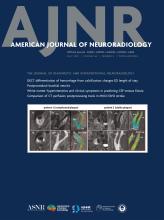Case of the Week
Section Editors: Matylda Machnowska1 and Anvita Pauranik2
1University of Toronto, Toronto, Ontario, Canada
2BC Children's Hospital, University of British Columbia, Vancouver, British Columbia, Canada
Sign up to receive an email alert when a new Case of the Week is posted.
December 10, 2020
Spinal Cord Decompression Sickness (SCDS)
- Background:
- Decompression sickness can be classified into 2 types based on the severity of symptoms. Type 1 is more common and associated with joint pain, skin marbling, small patchy hemorrhages, and lymphatic obstruction. Type 2 is associated with more serious symptoms and can be further subdivided by the organ involvement: brain, spinal cord, inner ear, or lung. Spinal cord decompression sickness falls into the latter category and is seen in 10% to 30% of cases of decompression sickness.
- The underlying pathophysiology is due to nitrogen bubble formation within tissues and the intravascular space during ascent from deep-sea diving.
- It is not completely known if the mechanism of tissue injury is through arterial or venous infarction, or by direct toxicity.
- There is a predilection for white matter injury, as the high fat content of the myelin sheath increases the solubility of nitrogen gas during descent. During ascent, the released nitrogen bubbles interrupt blood flow either by direct obstruction of the small capillaries or by activating clotting at the blood-bubble interface.
- Extensive gray matter lesions in some cases indicate an arterial infarction process. Lateral and posterior column white matter lesions within the spinal cord may indicate obstruction of venous outflow, leading to vasogenic edema.
- The third postulated mechanism is direct toxicity of nitrogen bubbles on neurons, leading to cytotoxic edema and cell death.
- There may also be overlap in the mechanisms of injury.
- Clinical Presentation:
- Paraplegia is the most common presentation related to spinal cord involvement.
- Tetraplegia or hemiplegia can also occur, following a typical history of deep-sea diving.
- Key Diagnostic Features:
-
The thoracic cord is most frequently involved; relatively lower mobility and blood flow compared with the rest of the spine decrease the likelihood of formed nitrogen bubbles washing out of tissues and intravascular space.
-
Abnormalities most frequently manifest as patchy hyperintense signal on T2-weighted images in the lateral or dorsal white matter columns of the cord.
-
Hemorrhage may also be seen and carries a worse prognosis.
-
Normal imaging does not rule out SCDS; the negative predictive value of normal imaging has been reported as 77%.
-
- Differential Diagnoses:
- Decompression sickness must be differentiated from typical arterial infarction, demyelination, or tumor. A history of recent deep-sea diving with typical imaging features helps make the diagnosis of SCDS with confidence.
- Arterial infarction: most commonly involves the anterior gray matter with a classic “owl eyes” sign and has an acute onset
- Transverse myelitis: idiopathic or related to underlying demyelinating condition, involves large cross-sectional area of cord, extends over a long segment, subacute progression
- Multiple sclerosis: multifocal short-segment involvement of cord, long-term relapsing-remitting or progressive course, brain may also be affected with typical lesion distribution
- Neuromyelitis optica: longitudinal involvement of cord with patchy enhancement, optic nerve involvement, NMO-IgG seropositivity can help make diagnosis
- Dural AV fistula with venous congestion: subacute to chronic course, enlarged flow voids may be seen at the surface of the cord
- Intrinsic spinal cord tumor: subacute to chronic progressive course associated with cord swelling
- Treatment:
- Urgent hyperbaric oxygen therapy has been successful in treating spinal decompression syndrome and may reverse the cord signal abnormality.
- The role of adjunctive therapies such as hydration, steroids, and aspirin has not been established.











